 | James Bates Thomson - Business mathematics - 1884 - 344 pages
...principal, and find the amount due on it for the next period, and so on through the whole time. II. Subtract the given principal from the last amount, and the remainder will be the compound interest. NOTE. — If there are months or days after the last regular period at which the interest is compounded,... | |
 | M. P. Caldwell - Arithmetic - 1883 - 198 pages
...principal as before. Proceed in this manner with each successive year, 01 period of proposed time. Finally subtract the given principal from the last amount, and the remainder will be the compound interest. 1. What is the compound interest of $1200 for 2 years at 7 per cent. ? Operation. 1200 7 84.00 1200.... | |
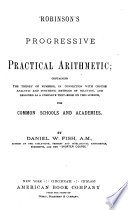 | Horatio Nelson Robinson - 1888 - 372 pages
...Interest for 3d year. $238.203 Amount for 3 years. 200.000 Given principal. $38.203 Compound interest. RULE. I. Find the amount of the given principal at...amount, and the remainder will be the compound interest. 1. When the interest is payable semi-annually or quarterly, find the amount of the given principal... | |
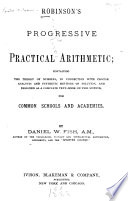 | Horatio Nelson Robinson, Daniel W. Fish - Arithmetic - 1888 - 372 pages
...Given principal. $38.203 Compound interest. RULE. I. Find the amount of the given principal at ths given rate for one year, and make it the principal...amount, and the remainder will be the compound interest. 1. When the interest is payable scmi-annnally or quarterly, find the amount of the given principal... | |
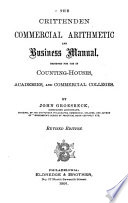 | John Groesbeck - 1891 - 426 pages
...next period, and add as before, and so continue for each successive period to the time of settlement. Subtract the given principal from the last amount, and the remainder will be the compound interest. When the time is for years, months, and days, find the amount for the years, and the interest on this... | |
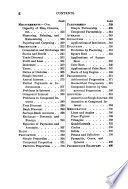 | Horatio Nelson Robinson - Arithmetic - 1892 - 428 pages
...amount, we find the compound interest to be $38.20. II. Find the amount of this new principal, and maJce it the principal for the third year, and so continue...remainder will be the compound interest. 1. When the intercut in payable serai-annually or quarterly, find the amount of the given principal for the first... | |
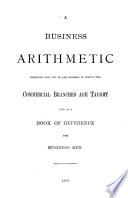 | 1893 - 252 pages
...this result as a principal for the next period, and so on through the whole time. II. Subtract the principal from the last amount, and the remainder will be the compound interest. If the time contains fractional parts of a period, as months and days, find the amount due for the... | |
 | Oscar F. Williams - Arithmetic - 1894 - 332 pages
...this result as a principal for the next period, and so on through the whole time. II. Subtract the principal from the last amount, and the remainder will be the compound interest. REMARK. — For half or quarter years, take one-half or one-quarter the rat* per cent. for one year.... | |
 | Edward Gideon - 1902 - 272 pages
...the second period, and find the amount as before ; and so continue till the end of the given time. III. Subtract the given principal from the last amount, and the remainder will be the compound interest required. Note 1. — If the interest is compounded semi-annually, the rate % is one-half of the yearly... | |
 | John Henry Moore - Business mathematics - 1904 - 404 pages
...make that the principal for the second period, and so proceed to the time of settlement. Subtract the principal from the last amount, and the remainder will be the compound interest. If the time contains fractional parts of a period, find the amount due for the full periods, and to... | |
| |